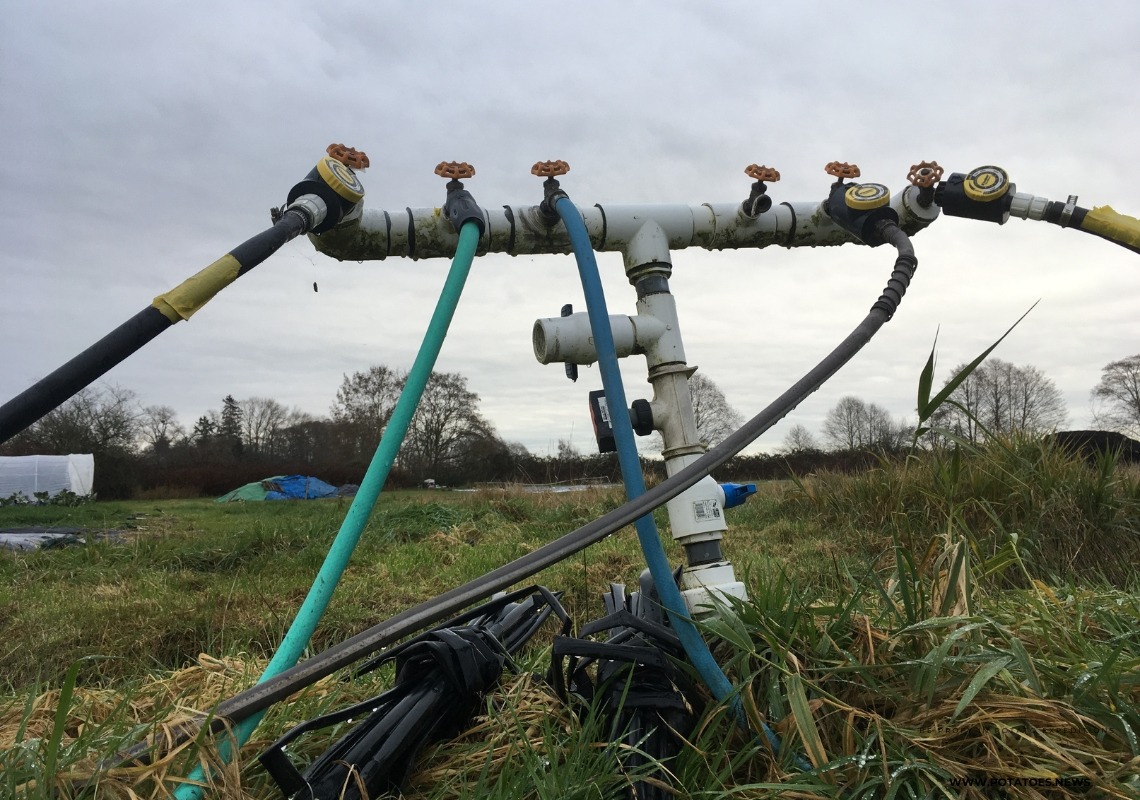Crop Description and Climate
The potato (Solanum tuberosum) is native to the Andes, thriving in the tropical highlands. Today, it is a crucial crop globally, particularly in temperate climates, with current production around 308 million tons from 19 million hectares (FAOSTAT, 2001). The potato’s yield is influenced by temperature, with optimal growth occurring at mean daily temperatures of 18 to 20°C. Tuber initiation requires night temperatures below 15°C, and soil temperatures of 15 to 18°C are ideal for tuber development. Extreme temperatures—below 10°C or above 30°C—can significantly inhibit growth.
Potatoes are categorized into early (90 to 120 days), medium (120 to 150 days), and late varieties (150 to 180 days). Early varieties need a daylength of 15 to 17 hours, while late varieties can yield well under varying daylengths. In tropical climates, short-day varieties are needed for adaptation.
Potatoes are typically rotated with crops like maize, beans, and alfalfa to maintain soil fertility, control weeds, and minimize losses from pests and diseases. They require well-drained, aerated, and porous soil with a pH of 5 to 6. Fertilizer requirements are substantial, with recommended doses for irrigated crops being 80 to 120 kg/ha of nitrogen (N), 50 to 80 kg/ha of phosphorus (P), and 125 to 160 kg/ha of potassium (K). Potatoes can be grown on ridges or flat soil; ridge planting is common under irrigation, while flat planting often yields better in rainfed conditions. Proper cultivation practices are crucial to avoid root and tuber damage, and in temperate climates, ridging is used to prevent tuber greening.
Potatoes are moderately sensitive to soil salinity, with yield reductions at various electrical conductivity (ECe) levels. For instance, yields decrease by 10% at an ECe of 2.5 mmhos/cm and by 50% at 5.9 mmhos/cm.
Crop Stages and Water Management
Potato growth can be divided into several stages, each with specific water requirements:
- Initial Stage: (25 days)
- Crop Development: (30 days)
- Mid-Season: (45 days)
- Late Season: (30 days)
- Total Growing Period: 115 to 130 days, depending on the region and variety
Different regions have varied crop coefficients (Kc), which help in managing water. For instance, in semi-arid climates, the initial stage has a Kc of 0.5, increasing to 1.15 during the mid-season, and decreasing to 0.7 at maturity.
Water Requirements
To achieve high yields, potatoes require 500 to 700 mm of water over a 120 to 150-day growing period. The crop coefficient (Kc) varies throughout the growth stages:
- Initial Stage: 0.4-0.5
- Development Stage: 0.7-0.8
- Mid-Season: 1.05-1.2
- Late-Season: 0.85-0.95
- Maturity: 0.7-0.75
Water Supply and Crop Yield
Potatoes are sensitive to water deficits, with yield reductions occurring if the total available soil water is depleted by more than 30 to 50%. Water deficits during stolonization and tuber initiation (Stage 1b) and yield formation (Stage 3) are most detrimental. Managing water supply effectively can optimize yields and prevent issues like tuber cracking or malformation.
Water Uptake and Irrigation Scheduling
Potatoes have a shallow root system, with 70% of total water uptake occurring from the top 0.3 m of soil. For efficient irrigation, it’s crucial to avoid water deficits during critical growth periods, particularly during tuber initiation and yield formation. Scheduling irrigation to avoid excess depletion during ripening can help in conserving water and improving yield quality.
Irrigation Methods
Common irrigation methods for potatoes include furrow and sprinkler systems. Mechanized sprinkler systems are particularly effective, replenishing water frequently to maintain optimal growth conditions. Proper irrigation scheduling can save water and enhance yields by avoiding over-irrigation and ensuring adequate moisture during key growth stages.
Yield and Water Efficiency
Under optimal irrigation conditions, yields for a 120-day crop range from 25 to 35 tons/ha in temperate and subtropical climates, and 15 to 25 tons/ha in tropical climates. Water utilization efficiency, measured as the yield per cubic meter of water (Ey), ranges from 4 to 7 kg/m³ for tubers with 70 to 75% moisture.
Effective water management is crucial for maximizing potato yields and quality. By understanding the crop’s water needs and implementing proper irrigation practices, growers can ensure productive and sustainable potato cultivation.


